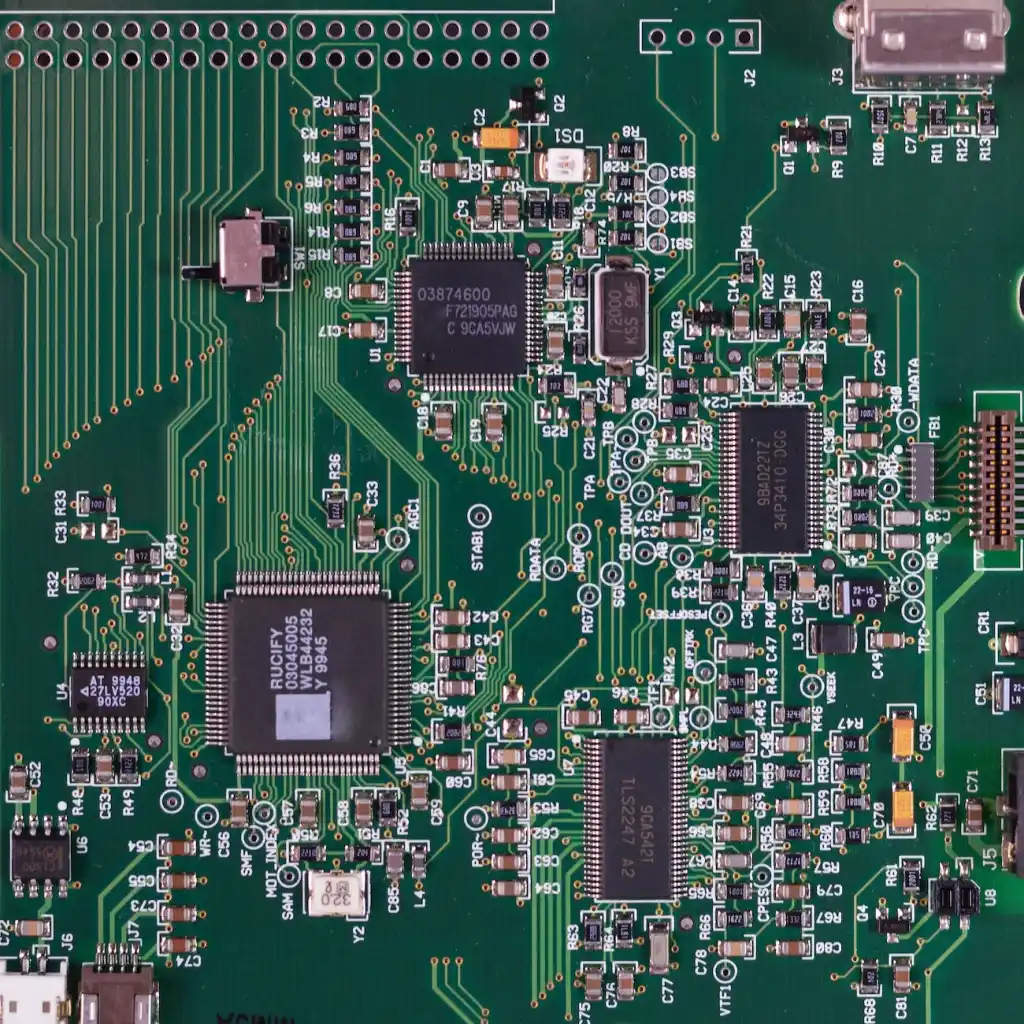

Mercanteo was the initial name and I have suggested the name Ambient given the French consonance coming from Ambient et Ambiance, a place where you can feel a sense of beatitude and comfort. The Founders of this Startup had no clue about how to make this company the reflection and the expression of such metaphors.
The basic idea of the operation of this Startup was to have the purchase made by any business transferred to the Accounting Software and registered as a receipt with the amount of money spent. This will allow also not only to trace the expense but also to know through the receipt which credit card or method of payment was used.
I developed this research to be included in the existing website that had absolutely any study or pamphlet or even a kind of brochure presenting the product and its specifications or the value proposition that Mercanteo-Ambient was developing or offering as a service. The website had only a generic presentation of more dreams than realities and a summary of what McKinsey had taught to the Founders of this Startup given that the consulting firm was their first and last job before landing in this startup.
Build the first layers of prospective clients to be approached to enroll in the Mercanteo Program. So I launched a strategy of reassessment and reevaluation of the documentation and presentation of the Value Proposition and its Validation to enable Mercanteo-Ambient to have an identity based on the definition of the areas where the solution is proposed and what this solution is as a service and facilitation for further inventions and adaptation to the needs and demands of the clients and other companies offering synergistic operations that can complete our offering of services in the areas of reporting and documenting the Return on Investment and the allocation of Budgets of the operational expenses and to the financing of all purchases and acquisitions.
The Founders of Mercanteo-Ambient were more interested in attracting funds and investment than building the products and services or even the company. A table with a Chair facing the wall was the Technical Department: A guy who would show up only to upload what was made of this application by inserting in the potential client the Microsoft Excell.
The rest of the technical were the Untouchables from Calcutta were 4 to 5 individuals of Indian origin who were brought and under the supervision of the Vice President of Operations, a Lady of Indian origin, a former McKinsey employee, and Cofounder of an empty shell called Mercanteo-Ambient.
These 4-5 individuals were also under the spell of another Indian who was their Boss and who was hanging outside of the office smoking cigarette after cigarette going back and forth to the Fridge for drinks. They were all taciturn and they responded only to the Indian Lady, the Vice President. I tried to engage them about their work and the progress they made or just to explain their inputs and the value they are adding to the company with their daily fixing and staring at this wall as a curtain for the secretive reason of their presence and transparent action that is not explained to all of us, neither how they arrive every day to sit in front of this white wall.

They did not own cars or drive BMWs, so it must be the smoking Indian who Signed their presence and their absence, so he is the one who drives them to the office and takes them out of the office in his BMW, not the one parked outside as the symbol of elite belonging and success story in the making [See pic below].
They did not own cars or drive BMWs, so it must be the smoking Indian who Signed their presence and their absence, so he is the one who drives them to the office and takes them out of the office in his BMW, not the one parked outside as the symbol of elite belonging and success story in the making [See pic below].
If I dared to ask the Untouchables from Calcutta about the work they were doing, the content of their work, and their progress, all the Pack of Indian Techies panicked and all of them had a wide smiling face and answers while they desperately waited for the Vice-President or their Boss to come to their rescue. They had nothing to say or to communicate about. From that moment, the Indian Lady no longer said a word to me and had done the best job of her life to avoid eye contact with me.
Return on Investment by Beamer Boomer Boys

Bimmer in Empty Sunny Parking all Day Long – Sign of Success and Precious Horse in Chinese – “bao-ma”

The BMW Wheel of Fortune at the Silicon Valley
The BMW brand new car parked in the empty parking was the magnet for the first real funding of Mercanteo and Ambient which I learned later on. This BMW was like the “Idol made of Metal” to be adored for its blessing. The Sales Manager at the largest BMW Dealer in Silicon Valley who became part of Mercanteo’s Board of Directors and was responsible for stuffing the Fridge every afternoon Wednesday with beers and all kinds of beverages and premade food ready to be microwaved and swallowed. This Foody Man was also the one who persuaded and sold the idea of Mercanteo / Ambient bringing Lawrence Joseph Ellison of Oracle as an investor and member of the Board of Directors.
The hook was the BMW sale made to the Founder of Mercanteo / Ambient, the one sitting in the empty parking under the Sun of Redwood City, and the sale of BMW to Lawrence Joseph Ellison of Oracle of many other BMWs. Silicon Valley employees have their badges and allures as well as their reputations as successful StartupperS is the owning and the driving of BMW: The New Generation of BEMMEEERS.
It was not what you know but who you know – she or he who is driving a BMW.
The End of the Beemer Adventure
The 2 co-founders of the Company were an Indian Lady as Vice President and a Ukrainian as CEO who folded the Company when the number of employees became only himself and another Dreamer who made the big mistake of leaving Visa Card Corporation of San Mateo to come to crash at this moving sand startup.
The Vice-President got her tail behind her legs and rund before the moving of the BMW, she drove the Honda SUV to join Yahoo missed an offer by Microsoft for a deal of $44 billion, and ended up being rescued by Verizon for a sale of less than 4 billion dollars while Yahoo was accused of inflating the number of subscribers. After that magic fading, she is now a Vice President at Credit Evaluator and Provider after being rejected by Yahoo, the company she works in today is named Karma, What goes around comes around and back to the Future thanks to the Indian Connection in Silicon Valley
It is no more just being Beemer owner, it is more than that it is who you know from now on, Back to the Old Fashion Culture Future of American Corp.
The latest news on the Immigrant CEO from Ukraine who wanted to use BMW to be with the success makers became a Director of a Bank in Ukraine at the turn of 2000 and the BMW had magically disappeared from the Parking and the sight of the 101 exit of the Freeway.
My take on a high-tech startup in Silicon Valley: Dot Come, Dot Gone in Late Nineties
Said El Mansour Cherkaoui was Executive Director of Business Development at Amient/Mercateo Redwood City, California during the Dot Come – Dot Gone era. He witnessed how the money was spent left and right by the former McKinsey consultant who converted his ins and outs into a startup that never took off but received funding even from the founder of ‘Oracle.
A brand new BMW was parked in the parking lot while I had to drive the CEO of this Startup from his apartment to the office. This BMW was bought just to please the owner of the BMW dealership who in return organized a meeting with the Founder of Oracle who invested in the Mercateo. The name of Mercanteo Startup was changed to Ambient following my suggestion to have a softer French connotation.
Mercanteo’s product was supposed to remember all purchases made by online businesses at stores like “Computer USA”, Office Depot, and other outlets. Once the payment is made by credit card, the transaction is supposed to be recorded and transferred directly to the accounting system as an expense with details of the product purchased, date, place, and amount and who made the payment.
The person who was in charge of the corresponding software, a close friend and colleague of the CEO of McKinsey was of Indian origin and had brought 4 Indian individuals who passed the time staring at a monitor and the wall behind while a fifth Indian trotted along outdoors smoking cigarette after cigarette.
This lady of Indian origin (actually with good Karma dealings), whom I called COP – Chief Operating the Product, acted as the gate advocate for those Indian “engineers” to whom we could not speak or ask anything if she was not there. It is she who must give the authorization to fix a meeting. The excuse is that these engineers were hired and paid by the hour and the guys outside smoking cigarettes were their clock for the time they spent staring at their computer screen and the money that they cash in exchange.
This team of 5 taciturn Indians was like a parade of Madame Tussaud Wax Master of Disastertech showing off just to impress visitors and potential investors to show them that Mercanteo has employees conducting in-house research and development of the product, which in reality never existed apart from a modified version of Microsoft-like Excel Spreadsheets patched with an Oracle database, a hybrid product that “the COP” tended to present as “Ownership of Inputs versus Ownership of Outputs ” according to the McKinsyniene strategic approach.
On the technical level in terms of setting up and management, this time it was a single person, an “American “Toubab” by stock” and with a bohemian tendency on the edges, who has no desk or even a chair and had to be called to accompany me when I visited a potential client in their office. This Tech Support was a person who looked more like a mechanic who changed the spare part than a System Engineer or Network Engineer, so he did not provide a solution to the problem and worse the product was not at all ready to detect the problems or define the solutions.
On the other hand, the Fridge was always full of American food, Hotdog, Burger, Macaroni, Donuts, Soups, Chicken and Fish Nuggets, Corndog, Wings, Cheese, Pizza everything that is mechanically separated and prepared, a cold museum of stuffed with top-notch artificial and chemical products. The drinks were of the same quality especially the beers for weekends. It was the Fiesta, what was missing was a Country Band or a Mariachi Group to make the atmosphere more ambient than the new name of the Startup Ambient.
The other employees who could be counted on the fingertips were always in a pleasant mood and individuals capable of being helpful given their attitude and their presence which remained of real kindness. Young people aspired to make a difference around them and among them, but the rest were not at the level of this human quality that could also be identified in innocence and the desire to volunteer to do good. These people were part of my team and were chosen by a human relations class manager. One of the best I have had the opportunity to work with in all my professional history in the USA.
This lady, responsible for human relations management and therefore a talent recruiter, is a Caucasian American who was the reason for my arrival in this Startup from Sprint Corporation.
Ms. Black was the one who convinced me to join Mercanteo and had a knack for recruiting the best. When she was put aside during the recruitment of a Vice-President for Business Development, Mercanteo became Ambient began to show the cracks I mentioned above which became more gaping with this crash landing of a Caucasian rogue from the North who drove an old Buick, wrapped in a buttonless suit and spoke like a former clandestine site manager of tree cutters in the Amazon. I understood what he was made of when I invited him for lunch in a restaurant to assess his knowledge of the field of application of the product we were looking to develop. All he brought up with me was what he had done before and laid out names and companies that I had no reason to know about.
I felt like I was sitting opposite a veteran of wars lost in memory and thought and worse first on battlefields that we would be more likely to listen to and see on the Screen of ‘Money only on the actual geographical or historical ground. These places and these encounters were shooting from all sides as if a deposit of fireworks had been lit by accident, there was around this guy an opaque smoke from his cigarettes whose tirades on the cigarette made his lips shine with all fire soaked in beer foam. I had the impression of being in front of a dancer in a trance incensed by the smoke of joints and incense exotic and distant in time as in space.
This future Vice-President drank and smoked excessively with his belly protruding from his belt and his unbuttoned vest making him like Santa Claus dressed on the sly for an interview at a Startup delivering gifts without address or recipient, he was in the vaps and I, who had never tasted a beer in my entire life, could talk about European beers and my stay in France and Germany and my visits to all of Western Europe and Romania when he did not even know not the origin of the beer that was right in front of him. To my great surprise, he thought it was German when it was founded by a Czech family that has a Germanic-sounding name.
At that time, this Bud for You, an unusual slogan that was the pride of Americans, and when he realized that I could give him such knowledge of his own choice of drink that he considered a symbol of American nationalism, that at deep inside, listening to a guy supposed to be from the Middle East. For him, Morocco was synonymous with Monaco and Casino, another Las Vegas somewhere lost in Western Europe that Sean Connery and Grace Kelly, who became the Princess of this Principality, had put on the radar of geographical knowledge for the Middle American.
In addition to my identified ethnic stereotype in Terro-Palestinians, I was conversing with an American Englishman with a cross-hatched accent but eloquent in definition, expression, and substance as I unwittingly conveyed to him a profound knowledge of the intricacies of popular culture and history. American that even he did not have given his intellectual and educational limitations.
So I was before him magnified but all of this made him as suspicious and wary of me as his booze could only make the length and breadth of my knowledge of Made in USA populism and Only in America.
How come I knew all those beers and wines and I didn’t share a drink with him at the time?
Such a question ran through his brain polluted by alcohol and the smoke of exotic vapors and he was neither the first nor the last to ask it. A question that cost me several positions, several jobs, and several opportunities in business, private jobs, and positions in the Academy in the United States.
You didn’t have to go far either in the conversation or in the exchange to realize that my account was settled in this interaction at the level of ignorance that only the smoke from his cigarettes could hide from the gaze and not from human understanding. For that, I remained calm and I knew that my situation did not last long in this company whose CEO hired such an individual and forced him to parachute between us without taking into account the opinion of the first interested person who is the manager of human relations, nor of myself since I was second in the business development department. It was as if all the transactions concerning the hiring of this individual had been carried out under the table while serving us artificial alibis and complicit silences without any other transparent approach, “the fact. , “le fait accompli – the accomplished fact”: Take or Leave it.
All the team members of my department understood such manipulations and began to disappear one after another from the panorama, including the mechanic guy. Only the Indian “engineers” were still there looking at the wall and the screen of their computers, while the visit to their meter became more spaced out and only took place when this new Vice-President went out to bang a cigarette butt with another guy who was his buddy and he moved out and brought in his luggage.
Saga of Cascade and Flood of Bad News

More Twitter execs quit Share LinkedIn News Updated 58 minutes ago More Twitter executives headed for the exits as new CEO Elon Musk warned … Continue reading
This buddy walked like a gorilla, a former adventurer without adventure, and served as a bodyguard for this New Vice-President. I never understood what was the contribution or the role of this individual whose only approach made it clear that he is a go-getter with his head down like a bull in this new bullfight that this arena has suddenly become Mercanteo – Ambient where the swords are now hidden under muleta camouflaged under the cheap suits and the jackets of these new invaders which exceeded their shoulders with crumpled pants like scrap paper. European elegance had yet to conquer or be embraced by these new dot.com startup cowboys.
The cool allowed all deviations in dress and justified the lack of quality both in terms of the look and the food offered, there was neither Haute Couture, nor Haute Culture, Nor Haute Cuisine while High Technology remained in the margins of Buzz-Words and Jargon and nothing on the table of creation or innovation at the level of these Startups which were still far from even Alpha level.
Sharing research findings on ROI, IT, and CRM
RETURN ON INVESTMENT, INFORMATION TECHNOLOGY AND CUSTOMER RELATIONSHIP
Sharing research findings on ROI, IT, and CRM
This research and publication were part of my initiative to enhance the image of my position and responsibilities as well as the work I was conducting as Executive Director for Business Development at Mercanteo and Ambient before its acquisition by Oracle. Our startup focused on duplicating the ledger with the purchase receipts as the lead to trace the payment method and to transfer it to the Accounting software used as an expense. That is what the CEO has told us given that Ellison was a member of the Mercanteo Board of Directors and one of the investors and all this was driven thanks to that BMW sitting in the parking as a trophy of success for a Startup on the edge of the waterfront of Redwood City. Larry Ellison was known for surrounding himself with trophies figuratively and properly, and it was not astonishing that from playing tennis, he became one of the top sailors around the world bringing even the America Cup to the Bay Area.
Research by Dr. Said Cherkaoui
In 1997-1999, just before the initial burst of the first bubble with Dot/\com-Dot/\Gone, as Executive Director of Business Development at Mercanteo – Ambient, Innovator and Pioneer of NetSuite (acquired by Oracle) and as an Adjunct Associate Professor at the School of Technology at Golden Gate University in San Francisco – California, I conducted multiple research ranging from technology, business management, and international development [European Economic Community, NAFTA, Technology in China and the United States] and this within the schools and departments of this University. Among these research publications, I made this pioneering thematic presentation.
Dr. Miro Costa, as Department Head and Associate Dean of the School of Technology at Golden Gate University, San Francisco, has also encouraged this research given his direct interest and theme of his own on technologies of information.
My study has been reprinted by many publishers given the soundness of my analysis which since then has been confirmed by the development of IT and the implementation of an ROI-based CRM, here is a copy of – an excerpt from my research:
Return on Investment, Information Technology, and Customer Relationship Management
Said El Mansour Cherkaoui
https://www.yumpu.com/en/document/read/18214112/said-e-cherkaoui-phd




























